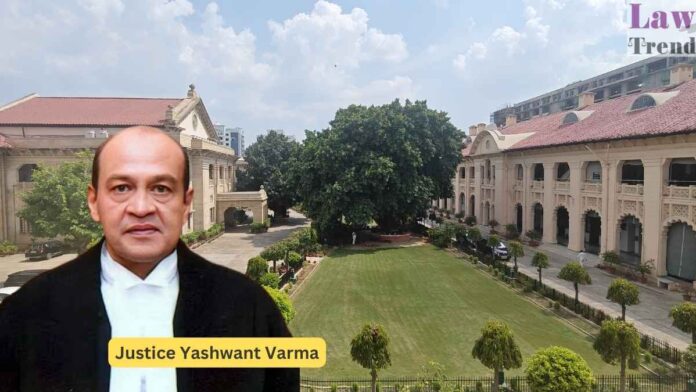The Speaker of the Lok Sabha has constituted a three-member Inquiry Committee, as mandated by the Judges (Inquiry) Act, 1968, to investigate allegations of misbehaviour against Hon’ble Mr. Justice Yashwant Varma, a sitting judge of the Allahabad High Court. The high-level committee comprises a sitting Supreme Court Judge, a High Court Chief Justice, and a distinguished jurist.
In a significant development, the Speaker of the Lok Sabha has initiated formal proceedings under the constitutional mechanism for the removal of a High Court judge by constituting an Inquiry Committee to investigate specific allegations made against Justice Yashwant Varma of the Allahabad High Court.
The constitution of this committee is a crucial step under the Judges (Inquiry) Act, 1968, which governs the procedure for the investigation and proof of misbehaviour or incapacity of a Judge of the Supreme Court or a High Court.
Background of the Process:
The process for the removal of a judge is a constitutional one, outlined in Article 124(4) and Article 217 of the Constitution of India, and detailed procedurally in the Judges (Inquiry) Act, 1968. The process can be initiated by a motion admitted in either House of Parliament. Once a motion for removal is admitted by the Speaker of the Lok Sabha or the Chairman of the Rajya Sabha, the presiding officer is mandated to constitute a three-member committee to investigate the grounds on which the removal is sought.
The Inquiry Committee:
In adherence to Section 3(2) of the Judges (Inquiry) Act, 1968, the Hon’ble Speaker has appointed the following members to the Inquiry Committee:
* Hon’ble Mr. Justice Aravind Kumar, a sitting Judge of the Supreme Court of India.
* Hon’ble Mr. Justice Manindra Mohan Shrivastava, the Chief Justice of the Madras High Court.
* Mr. B.V. Acharya, a distinguished jurist and Senior Advocate.
The Mandate and Way Forward:
The newly formed committee is tasked with framing definite charges against Justice Varma based on the allegations presented in the motion. It will conduct a quasi-judicial investigation, providing the concerned judge a reasonable opportunity to present his case and defend himself against the charges.
Following the conclusion of its inquiry, the committee will submit its report to the Lok Sabha Speaker. If the report finds that the judge is not guilty of any misbehaviour or does not suffer from any incapacity, the process will conclude, and no further action will be taken.
However, if the committee’s report concludes that the judge is guilty, the report will be laid before both Houses of Parliament. The motion for the removal of the judge would then be put to a vote. For the judge to be removed, the motion must be passed by each House of Parliament by a majority of the total membership of that House and by a majority of not less than two-thirds of the members of that House present and voting. If passed by both Houses, an address is presented to the President of India, who will then issue the order for the judge’s removal.







